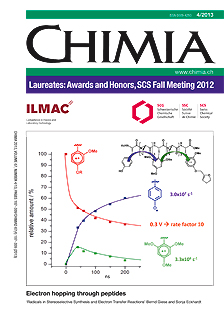Local Control Theory using Trajectory Surface Hopping and Linear-Response Time-Dependent Density Functional Theory
DOI:
https://doi.org/10.2533/chimia.2013.218Keywords:
Born-oppenheimer approximation, Linear-response time-dependent density functional theory, Local control theory, Nonadiabatic dynamicsAbstract
The implementation of local control theory using nonadiabatic molecular dynamics within the framework of linear-response time-dependent density functional theory is discussed. The method is applied to study the photoexcitation of lithium fluoride, for which we demonstrate that this approach can efficiently generate a pulse, on-the-fly, able to control the population transfer between two selected electronic states. Analysis of the computed control pulse yields insights into the photophysics of the process identifying the relevant frequencies associated to the curvature of the initial and final state potential energy curves and their energy differences. The limitations inherent to the use of the trajectory surface hopping approach are also discussed.Downloads
Published
2013-04-24
Issue
Section
Scientific Articles
License
Copyright (c) 2013 Swiss Chemical Society

This work is licensed under a Creative Commons Attribution-NonCommercial 4.0 International License.
How to Cite
[1]
B. F. E. Curchod, T. J. Penfold, U. Rothlisberger, I. Tavernelli, Chimia 2013, 67, 218, DOI: 10.2533/chimia.2013.218.







